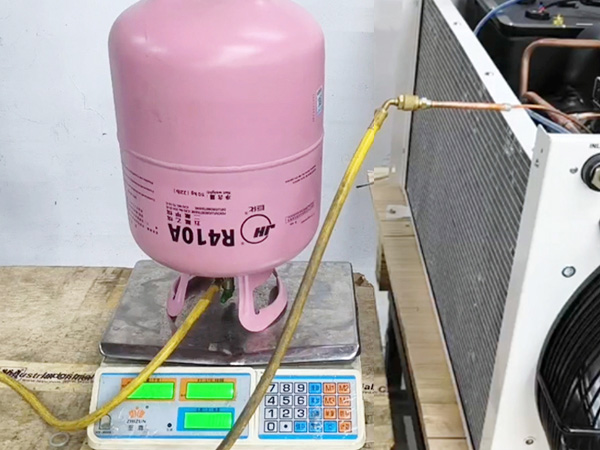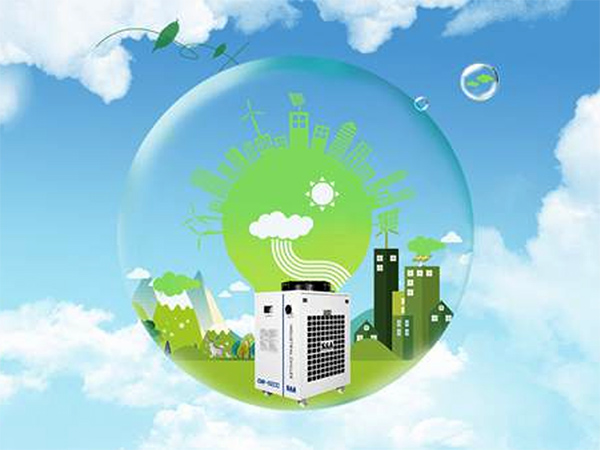Лазердик муздаткычтын муздатуу эффектиси канааттандырарлык эмес деп тапсаңыз, бул муздаткычтын жетишсиздигинен болушу мүмкүн. Бүгүн биз TEYU S&A стойкага орнотулган була лазердик муздаткыч RMFL-2000ди мисал катары колдонуп, лазердик муздаткыч муздаткычты туура заряддоону үйрөтөбүз.
TEYU үчүн операциялык колдонмо S&A Лазердик муздаткыч муздаткычты заряддоо
Лазердик муздаткычтын муздатуу эффектиси канааттандырарлык эмес деп тапсаңыз, бул муздаткычтын жетишсиздигинен болушу мүмкүн. Бүгүн биз RMFL-2000 стойкага орнотулган була лазердик муздаткычты мисал катары колдонобуз жана муздаткычты кантип туура толтурууну үйрөтөбүз.
Муздаткычтын муздаткычын толтуруунун кадамдары:
Биринчиден, сураныч, коопсуздук кол кап кийип, кенен жана жакшы желдетилген жерде иш. Ошондой эле, тамеки тартпаңыз, сураныч!
Эми сөзгө өтөбүз: Филлипс бурагычын колдонуп, үстүнкү барак бурамаларын алып, муздаткычты заряддоо портун таап, акырын сыртка тартыңыз. Андан кийин, заряддоо портунун герметикалык капкагын бурап, муздаткыч бошогончо клапандын өзөгүн оңой бошотуңуз.
КӨҢҮЛ БЕРҮҮ: Жез түтүктүн ички басымы салыштырмалуу жогору, андыктан клапандын өзөгүн бир эле учурда толук бошотпоңуз. Суу муздаткычтын ичиндеги муздаткыч толугу менен бошотулгандан кийин, муздаткычтын ичиндеги абаны 60 мүнөткө жакын алуу үчүн вакуумдук насосту колдонуңуз. Чаң соргучтан мурун, клапандын өзөгүн бекемдөөнү унутпаңыз.
Акырында, түтүктүн ичинде калган абаны тазалоо жана аны заряддоо түтүгүнө туташтырганда ашыкча аба кирбеши үчүн муздаткыч бөтөлкөнүн клапанын бир аз ачуу сунушталат.

Муздаткыч муздаткычты заряддоо боюнча кеңештер:
1. Компрессордун жана моделдин негизинде муздаткычтын ылайыктуу түрүн жана салмагын тандаңыз.
2. Белгиленген салмактан тышкары кошумча 10-30г зарядтоого жол берилет, бирок ашыкча заряддоо компрессордун ашыкча жүктөлүшүнө же өчүрүлүшүнө алып келиши мүмкүн.
3. Муздаткычтын шайкеш көлөмүн сайгандан кийин, муздаткычтын бөтөлкөсүн дароо жаап, кубаттоочу шлангды ажыратып, мөөр басуучу капкагын бекитиңиз.
TEYU S&A Чиллер R-410a экологиялык таза муздаткычты колдонот. R-410a нормалдуу температурада жана басымда азеотроптук эмес аралашма болгон хлорсуз, фтордуу алкандуу муздаткыч. Газ түссүз, болот баллондо сакталганда кысылган суюлтулган газ болот. Анын озон катмарын бузуу потенциалы (ODP) 0 болуп, R-410a озон катмарына зыян келтирбеген экологиялык жактан таза муздаткычка айланат.
Бул көрсөтмөлөр RMFL-2000 була лазердик муздаткычта муздаткычты кубаттоо боюнча кеңири кадамдарды жана сактык чараларын камтыйт. Бул маалымат сизге пайдалуу болот деп үмүттөнөбүз. Муздаткычтар жөнүндө көбүрөөк маалымат алуу үчүн, сиз "Өнөр жайлык суу муздаткычтын муздаткычтын классификациясы жана кириши" деген макалага кайрыла аласыз.


Сиз бизге керек болгондо биз сиз үчүн ушул жердебиз.
Сураныч, биз менен байланышуу үчүн форманы толтуруңуз, биз сизге жардам берүүгө кубанычтабыз.









































































































